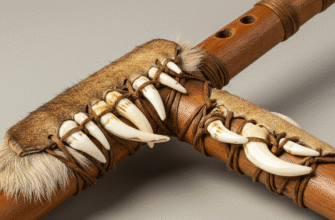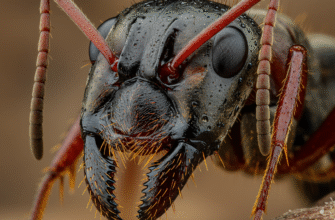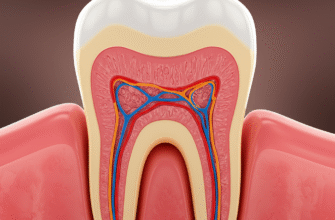The image of a fearsome feline, its upper canines elongated into terrifying daggers, is one of the most potent symbols of prehistoric life. These sabertooth cats, as they are popularly known, roamed various continents for millions of years, their iconic dental weaponry a testament to the incredible adaptability and sometimes bizarre pathways of evolution. While the term “sabertooth tiger” is a common misnomer – they were not directly related to modern tigers – their place in our collective imagination is firmly cemented. But what was the real story behind these magnificent, and often misunderstood, prehistoric predators and their most defining feature?
Understanding the “Sabertooth” Label
It’s important to clarify that “sabertooth” isn’t a single, neat taxonomic group. Rather, it’s a descriptive term for an ecomorph – a particular body plan and set of adaptations that evolved independently in several distinct groups of carnivorous mammals. The most famous of these belong to the subfamily Machairodontinae, the “true” sabertooths, which are part of the Felidae family (the cat family). However, other extinct groups like the Nimravidae (often called “false sabertooths”) and the Barbourofelidae also developed strikingly similar elongated canines, a stunning example of convergent evolution. This phenomenon, where unrelated species independently evolve similar traits to adapt to similar environments or ecological niches, highlights the powerful selective pressures that shaped these animals.
The Fangs: More Than Just Long Teeth
The sabers themselves were marvels of biological engineering, but also subject to specific constraints. They weren’t just scaled-up versions of modern cat canines; they possessed unique characteristics tailored for a particular killing method.
Types of Sabers: Dirk vs. Scimitar
Within the sabertooth ranks, dental morphology varied significantly, leading paleontologists to broadly categorize them based on their canine shape. Dirk-toothed cats, like the quintessential Smilodon (often called the “saber-toothed tiger”), brandished exceptionally long, slender, and often finely serrated canines. These teeth were like daggers, capable of inflicting deep, precise wounds. In contrast, scimitar-toothed cats, such as Homotherium, possessed shorter, broader, and more robust canines with coarser serrations. These teeth were more like curved blades, perhaps suited for a different type of cutting or slashing action. The variation suggests different hunting strategies or prey specializations among these apex predators.
Anatomy and Growth: Built for a Purpose
Sabertooth fangs were not only long but also typically flattened from side to side, making them somewhat blade-like. This shape increased their cutting efficiency while reducing weight. The roots of these teeth were enormous, anchoring them deeply within the skull to withstand the stresses of use. There’s evidence that, like many mammals, young sabertooths had deciduous (baby) sabers that were later replaced by their permanent, formidable adult set. A key debate has often centered on the fragility of these fangs. While they might seem delicate, biomechanical studies suggest they were incredibly strong when force was applied along their length and edge, perfect for a specific type of bite. However, they were indeed vulnerable to lateral (sideways) forces, meaning a struggling prey animal could potentially snap a tooth if the bite wasn’t executed correctly.
Scientific analysis of sabertooth cat fossils, including Smilodon, reveals that their iconic canines were remarkably strong against forces applied along their length, ideal for a quick, deep, shearing bite. However, they were relatively weak against side-to-side (lateral) forces. This structural insight is crucial for understanding their specialized hunting techniques, which likely involved immobilizing prey before delivering a precise, fatal bite to soft tissues. This specialized design meant they had to be careful hunters.
The Great Hunting Debate: How Were Sabers Used?
The precise method by which sabertooth cats dispatched their prey has been a topic of intense scientific discussion for decades. The sheer size and unusual shape of their canines rule out the kind of suffocating bite to the throat that modern big cats often employ. Instead, a more specialized technique was required.
The “Canine Shear-Bite” Hypothesis
The most widely accepted theory is the “canine shear-bite” or “slashing bite” model. This proposes that sabertooths used their immensely powerful forelimbs and neck muscles to first wrestle down and immobilize large prey. Once the prey was subdued, the cat would open its jaws to an impressive gape – some species like Smilodon fatalis could achieve a gape of over 120 degrees, far exceeding modern lions. They would then drive their sabers deep into the soft tissues of the neck or throat, severing major blood vessels and causing rapid blood loss and shock. This method relied on precision rather than brute crushing force. Indeed, the jaw musculature of many sabertooths suggests a weaker bite force compared to modern felines of similar size, further supporting the idea that the sabers themselves, guided by powerful neck muscles, did the primary work, not the jaw muscles themselves.
Subduing Giants: The Role of a Robust Build
Many sabertooth species, particularly Smilodon, were not built for speed like cheetahs or even lions. Instead, they had incredibly robust, muscular bodies with powerful forelimbs. Smilodon fatalis, for instance, had a physique more akin to a bear than a typical cat, suggesting it was an ambush predator that relied on overpowering its prey at close quarters. These powerful limbs, possibly tipped with formidable claws, were essential for grappling and pinning down large, struggling herbivores, creating the opportunity for the precise, deep bite needed to deploy their specialized fangs effectively without risking damage to these precious weapons.
Prey on the Menu
The primary targets for these specialized hunters were likely the large, relatively slow-moving megaherbivores of their time. The list of potential prey is impressive and varied depending on the continent and era:
- Mammoths and Mastodons
- Ground Sloths
- Bison
- Horses
- Camels
- Toxodonts (in South America)
The thick hides and substantial bulk of these animals would have made them difficult for conventionally-toothed predators to kill quickly. Sabers offered a way to inflict devastating wounds that could lead to rapid incapacitation, a vital adaptation for tackling such formidable quarry.
An Evolutionary Masterpiece: The Rise of Sabers
The journey of the sabertooth condition is a fascinating story of evolutionary innovation. The earliest saber-like dental features appeared tens of millions of years ago, long before the iconic Ice Age species. This dental armament wasn’t a one-off invention; it evolved independently at least five times in different mammal lineages. This convergent evolution underscores a powerful selective advantage for this type of weaponry under certain ecological conditions, likely tied to the availability of large prey that required specialized killing techniques. It was an evolutionary arms race, with predators developing new tools to tackle ever-larger or better-defended herbivores.
The Twilight of the Sabertooths: Why Did They Vanish?
Despite their evolutionary success over millions of years, all sabertooth lineages eventually went extinct. The last of the true sabertooths, like Smilodon, disappeared around 10,000 years ago, coinciding with the end of the last Ice Age. Their extinction was likely a complex interplay of factors. Climatic shifts dramatically altered habitats worldwide, impacting vegetation and, consequently, the large herbivore populations that sabertooths depended upon. The decline and eventual extinction of many megafauna species – their primary food source – would have had a catastrophic effect on these highly specialized predators. Furthermore, the rise of more adaptable, perhaps socially complex predators like wolves and modern big cats, as well as the increasing presence and hunting prowess of early humans, may have intensified competition for dwindling resources. Their incredible specialization, once a key to their success, may have ultimately become their downfall when conditions changed.
A Lasting Prehistoric Legacy
Sabertooth cats remain one of the most compelling examples of prehistoric life. Their fangs are not just biological curiosities but windows into ancient ecosystems, predator-prey dynamics, and the remarkable power of evolution to shape form and function. Fossil discoveries continue to refine our understanding of these magnificent animals, from their hunting behavior and social structures to the reasons for their ultimate demise. They serve as a powerful reminder of the constant flux of life on Earth and the fact that even the most fearsome predators are subject to the relentless forces of environmental change and evolutionary pressure. The sabertooth cat, with its iconic dental daggers, will undoubtedly continue to fascinate and inspire awe for generations to come, a true icon of a lost world.








